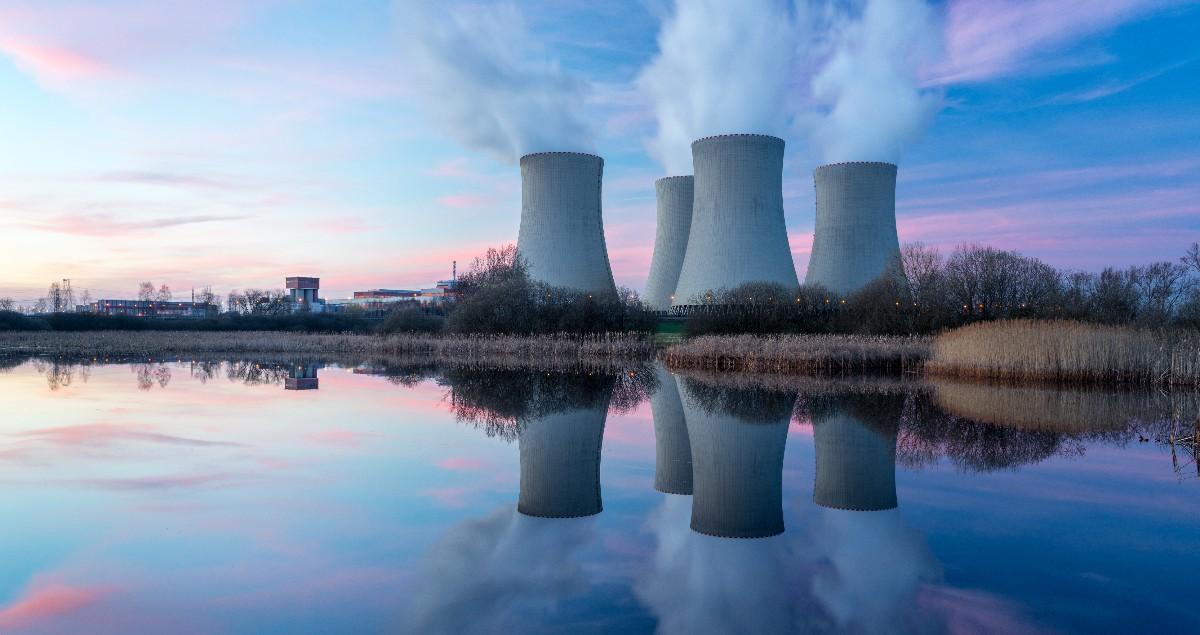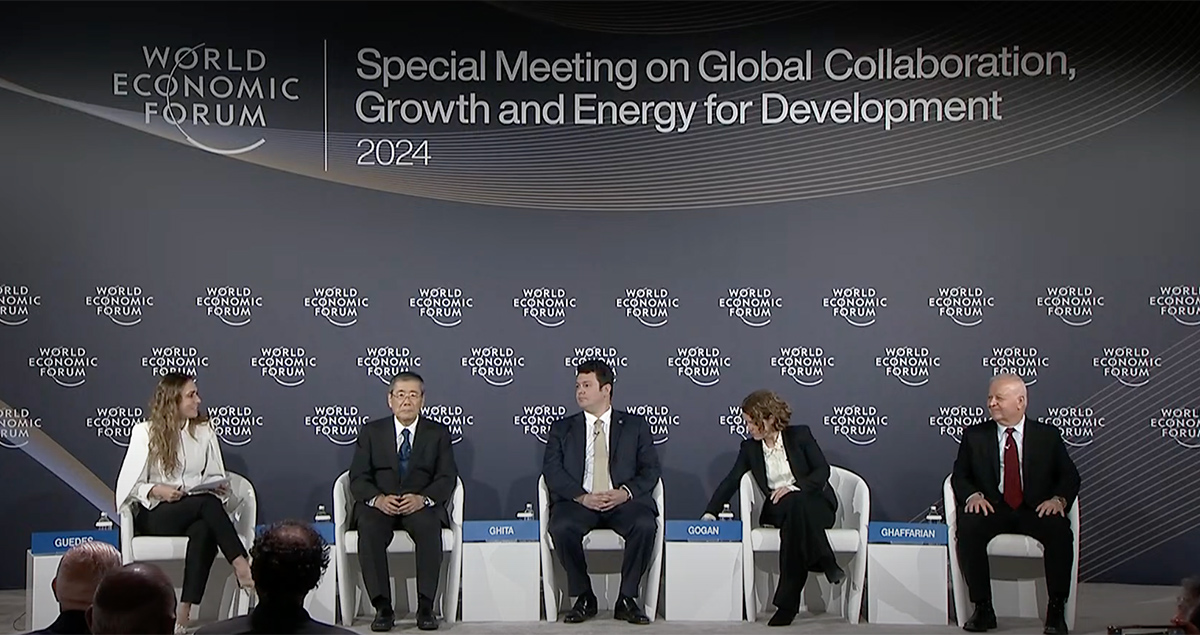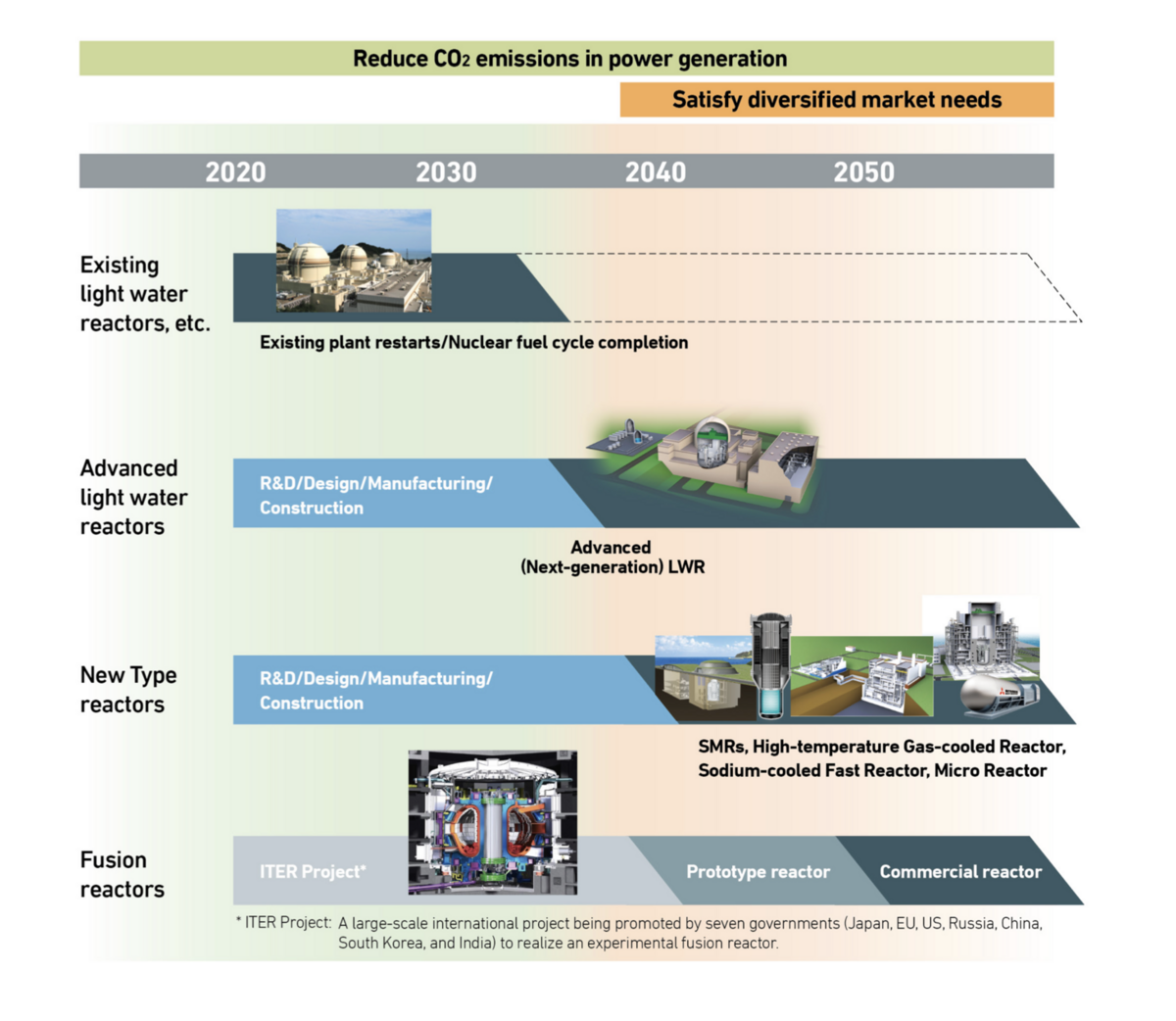What role will ‘new nuclear’ play in the energy transition?

The first electricity from a nuclear reactor was achieved 73 years ago, but the contribution nuclear can make to the global energy transition has only just begun.
After many countries scaled back their nuclear fleets following the Fukushima-Daiichi accident in Japan in 2011, nuclear power generation is back in the spotlight as an important low-emission energy source that can boost energy security and decarbonization, the International Energy Agency says.
“The benefits of nuclear power generation used to be common knowledge, but they have been forgotten recently. I’d like to stress these very significant benefits again,” Shunichi Miyanaga, the Chairman of Mitsubishi Heavy Industries (MHI) Group, highlighted during a panel session titled ‘The New Role of Nuclear’. The event was held at the World Economic Forum Special Meeting on Global Collaboration, Growth and Energy for Development in April.
New nuclear technologies play a big part in the nuclear revival, bringing greater flexibility, scalability and security to the industry. They are opening up untapped opportunities for atomic energy to play its part in a net zero energy mix.

Extending the lifetime of conventional nuclear power plants
After several nations shut down old conventional power stations, there is a new recognition that these reactors still have a role to play. The United States, France and Japan are just some of the countries that have put policies in place to extend the lifespan of existing nuclear power plants, according to the IEA.
While the capital cost of a nuclear reactor is higher than for coal-fired or gas-fired plants, nuclear energy is highly cost-efficient in terms of fuel once built. Just one inch-long pellet of uranium has the same energy intensity as 149 gallons of oil and just 93 reactors can generate 20% of all US electricity, says the Nuclear Energy Institute (NEI).
Nuclear also has the advantage of generating more power with less land compared to solar and wind. According to the NEI, its footprint is 31 times less than solar facilities and 173 times less than wind farms. This is a key benefit in terms of supporting global environmental and sustainability targets, including the UN Sustainable Development Goals (SDGs).
Robust economic incentives help nuclear’s growth story, too. It returns 75 times its initial energy investment, versus 28 times for gas and 2 times for solar. Such efficiency is highly sought-after when the journey to net zero emissions by 2050 calls for approximately $200 trillion in new investment globally.
Miyanaga pointed out that nuclear energy may have higher upfront costs than some renewable technologies, but it lasts much longer.
This is a powerful argument both for restarting existing plants and also for commissioning new large light water reactors, with advanced safety features, that can supply reliable baseload energy to balance national electricity grids. A growing number of countries is planning such facilities.

Small but powerful
New technology developments are helping to bring down the cost of reactors and diversify their range of applications.
One example is small modular reactors (SMRs), which Miyanaga called a “breakthrough technology”.
The power output for an SMR is expected to be up to 300MWe – a third of the capacity of a conventional reactor,
“The majority of the prefabrication of the technology can be made off-site,” Miyanaga said. “Which means the cost and the quality can be much more reliable. This makes it easier to manufacture and it reduces the difficulty of on-site work.”
He added that, overall, this meant that the implementation process could be accelerated.
Safety concerns are also being addressed through various new safety features inherent in the SMR’s design, as the European Commission has highlighted, which views SMRs as a contributor to achieving the targets of its Green Deal. These mean the reactor can be made safe with little operator intervention should an accident occur while also eliminating components that could contribute to failures.

Diversifying nuclear’s use cases
Their small size also means that SMRs can be used in a broader range of use cases. For instance, the European Commission envisages SMRs not just replacing large fossil fuel-fired plants but also integrating them into energy hubs that draw on a variety of energy sources, including renewables and hydrogen. SMRs could also supply heat for industrial applications, district heating and electrolytic hydrogen production. Given their compact size and fast rollout, SMRs are also potential power sources for data centers to support their predicted rapid growth.
Nuclear technology can also step in to drive the production of electrolytic hydrogen – often referred to as pink, purple or red hydrogen – at a time when there is not enough renewable electricity available to meet demand. Miyanaga pointed out MHI has been “very active” in developing a high temperature gas-cooled reactor, which it hopes to use for this.
Nuclear fusion is another dynamic frontier; long explored, but extremely challenging. However, projects are now progressing further than ever and nuclear fusion could be a commercial reality within a few decades – a blink of an eye in scientific terms.
“In my lifetime, I would like to see nuclear fusion commercialized,” Miyanaga said.
Such technological advancements show that nuclear power can reshape the environmental efficiency of energy markets, industry, transport, chemical markets and many others.
Scaling up new nuclear
As of May 2024, there were 440 nuclear power reactors operating in more than 30 countries, with a combined capacity of about 390GWe, according to the World Nuclear Association. A further 61 are under construction and 110 planned.
With the potential for nuclear reactors to be established nearly anywhere, especially SMRs, this helps avoid supply-demand bottlenecks. Meanwhile, having uranium supplies located in a politically diverse range of countries reduces the risk of supply disruptions.
The full potential of nuclear power has long been in the shadows, but streamlined supply chains and affordable scalability, coupled with cutting-edge new technology, are bringing this diverse market closer to centre stage than ever.
![]()
Discover more about the new face of nuclear power





